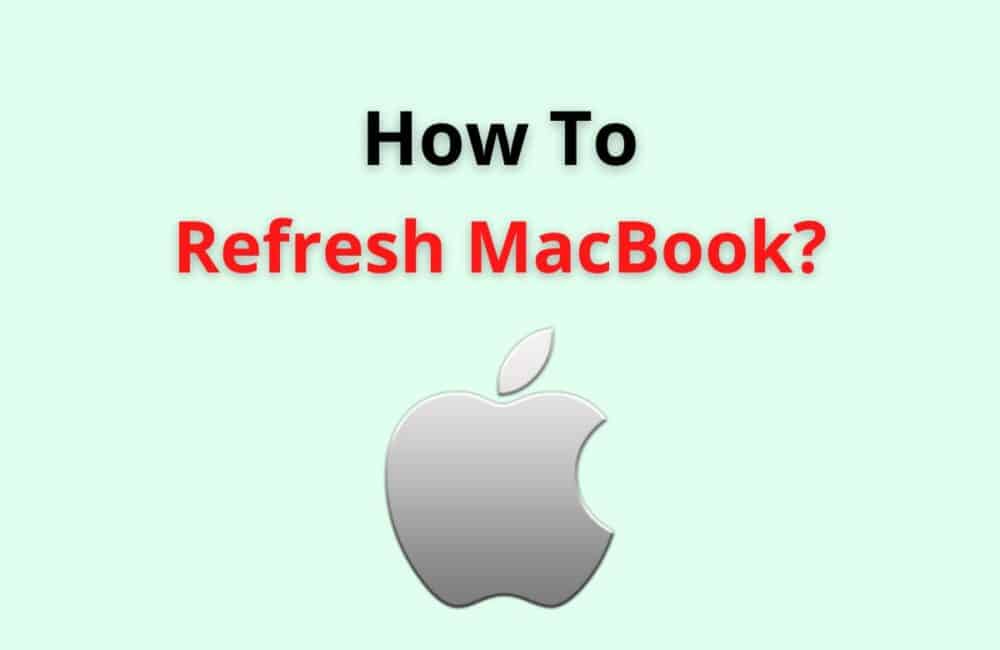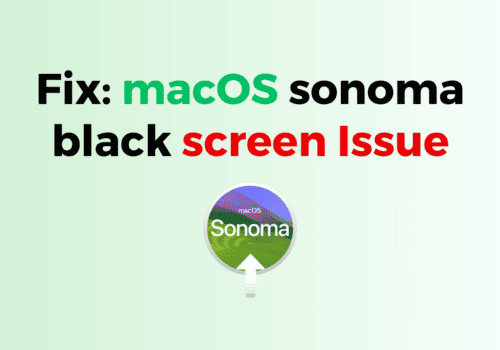MacBook is everyone’s desire in today’s world. Who wouldn’t want to have a power-packed system that possesses splendid and vast displays, long-lasting battery backup, and a sleek and compact setup to top it off, right?
But as we all know, technology evolves with time and can have certain limitations, such as your MacBook slowing down, getting laggy and hot, and not being able to refresh it.
If you are someone who’s suffering from any of the above Mac problems, this article is for you, mate.
The article will provide you with the reasons and solutions to all your problems related to the MacBook slowing down, getting laggy or hot, or not being able to refresh it.
Without further a due, I’d like to act as your problem solver and get your issue resolved by the end of the article.
Refreshing your device now and then is required as it reduces the risk of users’ downtime and makes the device more efficient to work while committing fewer mistakes.
Different devices allow you to refresh in different ways. On a MacBook, you can do the following.
You all must be aware (if you have recently switched to an Apple product) that pressing the F5 button on the keyboard works as a direct command for refreshing your several Windows platforms, but beware of the Mac as it won’t produce the same result on that command.
As a result, the F5 key will dim your MacBook’s (on compatible MacBook Air and MacBook Pro models) keyboard’s backlight. Otherwise, it’s of no use.
How To Refresh MacBook?
Method 1: Press Command + R
Simply, press the Command + R buttons simultaneously to perform the refresh on your Mac. This command is applicable to refresh the majority of Mac web browsers.
Method 2: Hard Refresh
Alternatively, if you think your device needs a hard refresh, press Command + Option + R (in Safari) and Shift+ Command + R (in Google Chrome and Firefox) simultaneously.
Method 3: Refresh Web Browser
You can also click on the (⟳) symbol located around the address bar to refresh any web browser.
Method 4: Assign The Shortcut
If somehow this command doesn’t work well for you, no need to fret.
- Navigate to System Preferences
- Go to the Keyboard option
- Click on Shortcuts in order to assign the shortcut as needed.
Also Read: Apple Pay Locked: How To Unlock Apple Pay?
Is There A Refresh Button On Mac?
No, there isn’t any direct refresh button placed on the Mac’s keyboard. For that, you need to use the combination of buttons assigned as a shortcut to refresh your page or any specific thing on device.
Following is the combination to refresh web browser page on your MacBook; Press Command + R. It will refresh the page in no time.
If you want to refresh/reload the browsers available on Mac, check for a (⟳) symbol located to the right of the address bar in Safari and the left of the address bar in Firefox, Chrome, and Microsoft Edge.
How Do You Refresh A Slow Mac?
There’s no big deal if you’re dealing with a slow Mac in your day-to-day life. You can overcome the issue by knowing the root causes and following the right fixation steps.
A device slowing down is ubiquitous nowadays, and there could be ample reasons behind it.
Here we will discuss all the possible reasons behind your Mac slowing down and fixations to fix the issue as a simple refresh (Command + R) won’t help you much in this case. So, shall we start? Certainly, we should.
Fix 1: Optimize The Storage
Your MacBook’s start up disk may be too crowded. Do the following to clear it up;
- Transfer all your significant files to a different disk or an external drive.
- Then, delete all the files insignificant to you from the start up drive.
Moreover, you can store all your documents and files on your Mac (cloud), allowing you to eliminate the files that are no longer needed.
Fix 2: Increase Mac’s Memory
One can never be satisfied with the memory storage in Apple products. You always run into a shortage of memory storage and require more than it’s already available.
- To check the default memory (in Mac):
- go to the Apple menu
- Tap on About This Mac
- Open Overview pane (to check the memory listed there).
- You can find details about the software’s requirements on the app’s documentation.
Also Read: How To Turn Off Downtime On Apple Watch?
Fix 3: Quit Unnecessary/Incompatible Apps
Quit unnecessary apps that don’t agree (not compatible) with your Mac. The apps in your Mac might require a distinct processor or graphics card.
- If you want to know which processor your Mac is equipped with, go to the Apple menu > About This Mac, and click on Overview.
- If you want to know your Mac’s graphics card, select the Apple menu > About This Mac, and lastly, click on Displays. It must be displayed in the middle of the screen.
Fix 4: Use Disk Utility
Disk Utility can be used to ascertain and attempt to resolve any issues regarding your disk.
You can also access Activity Monitor to check if any apps or activities are causing a lot of load to your system.
Fix 5: Change The Refresh Rate
This final step is for the professionals who are gaming or editing their work videos the whole day. In order to attain proficiency in your work, you can change the refresh rate on your Mac.
- Go to the Apple menu
- Tap on System Preferences
- click on Displays.
- Select the Refresh Rate pop-up menu
- choose a refresh rate.
- Set it back to the default (subjective) when you’re done viewing or editing the video content.
Why Is My MacBook So Slow?
1. Overcrowded Startup Disk
Your Mac’s startup disk may be full. To clear up some space;
Organize all your important documents on an external drive or different disk.
Delete all the files that are no longer needed.
You can also store your documents in the cloud (macOS).
2. Memory Shortage
You might require more memory than is already available. For that, you can try upgrading your memory;
Go to the Apple menu, select About This Mac, and click on the Memory.
You’ll find Memory Upgrade Instructions located in the bottom-right corner of the screen, follow them (might not work on all devices).
3. Outdated Mac
An outdated version of your Mac may lead to a rapid slow down and affect its optimization. To make sure it doesn’t happen to you, always keep your system updated. To do so,
Navigate to the Apple icon (upper left corner), select About This Mac, and click on the Software Update (you might also find the update option in the drop-down menu).
- Click on Update Now to get the latest version of your Mac.
- Unnecessary Background Apps
- Quit background apps you’re not using or aren’t compatible with your MacBook, and
- Simply restart them, select the Apple icon and click Restart.
4. Mac’s File Cache
Temporary files can cause problems if they are kept on your Mac for too long. To avert your Mac from slowing down, clear your file caches after a certain period of time. All you have to do is,
- Open Finder, select Go, and scroll to the Folder.
- Then, enter the command ~/Library/Caches and click Go. Either remove entire files to completely clear the cache or select a few selected files and delete them (if not required).
Also Read: How to Find Apple ID Password?
Why Is My Mac So Laggy?
There could be several possible reasons behind your Mac slowing down or becoming sluggish. The system may lag when the startup disk is overcrowded.
Old MacBook model, hard drive exceeding the capacity, and Malware can also slow your Mac down by dominating system resources.
- To check your Mac’s by default storage space, go to the Apple icon, and select About This Mac.
- There, select the Storage tab and click on the Manage button to free up some space.
- This will help you get rid of a slow and laggy Mac.
Why Is My Mac So Hot?
Software straining your processor, several unnecessary background apps and opened browser tabs, charging your device, or working near warm places are a few several reasons behind your Mac getting hot.
Is the MacBook getting too hot while working now and then? If happening frequently, it can exhaust your battery and damage the hardware.
To bypass the issue, please check the software you run and the placement of your Mac.
Do Macs Slow Down Over Time?
Yes, Macs do slow down over time like any other Windows Pc or laptop. After every macOS update, your Mac will tend to slow down a tad because of additional features and intricacies.
Additionally, unnecessary apps on your Mac, Malicious software, Aging hardware, Thermal issues, poor Storage, and inadequate RAM are a few reasons that can slow down your Mac as well.
Why There Is No Refresh In Mac?
This is due to Apple not wanting its applications closed; once the computer is refreshed, you get rid of all the remaining application catches, resulting in a lag the next time the application is opened, increasing the lag by as much as 27%.
This is why the new models no longer have a refresh button on their interfaces.
Also Read: How Accurate Are Apple Watch Calories?
Conclusion
In this article, we have covered all things related to MacBook refresh commands, including why it is getting hot, lagging, or slowing down.
Now that we know, Macs can slow down with time, due to several reasons, such as Outdated software, Unnecessary background apps, Malwares, and overcrowded Start up Disks, enough to make your life hell.
To troubleshoot those problems, refer to the steps mentioned above (Command +R to perform a refresh) and do everything precisely to make things work swiftly again.
After all, you paid an exorbitant amount of money for an expensive machine in hopes that it would perform to its best ability.



